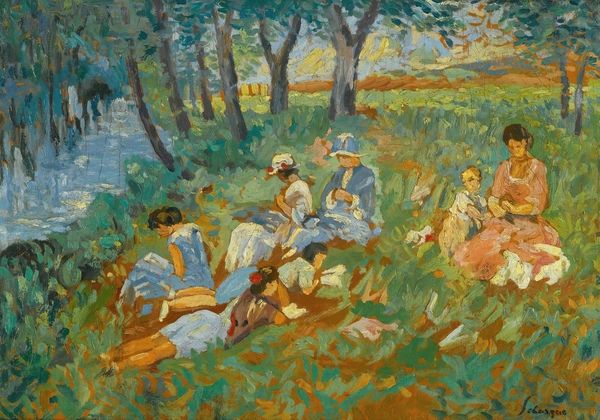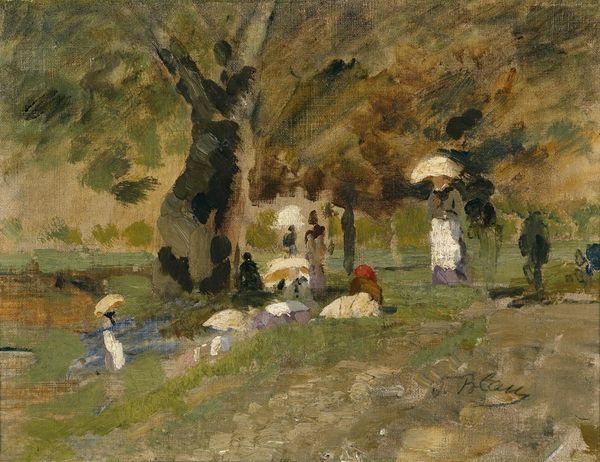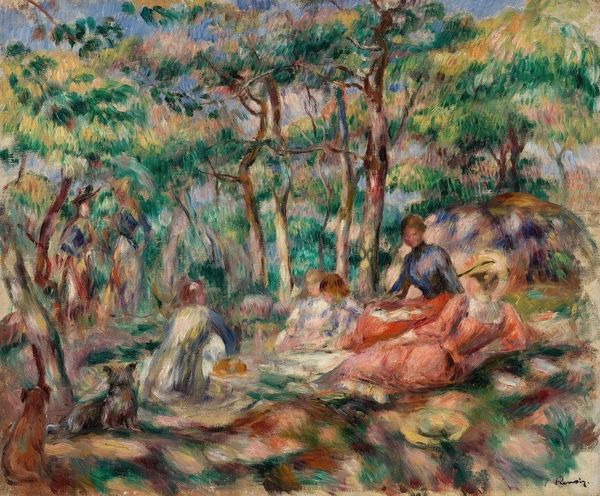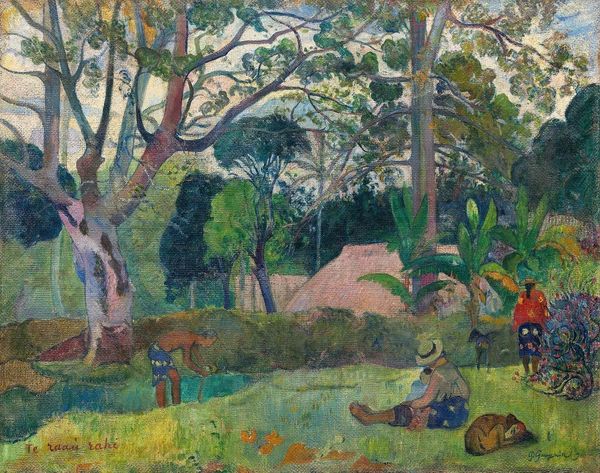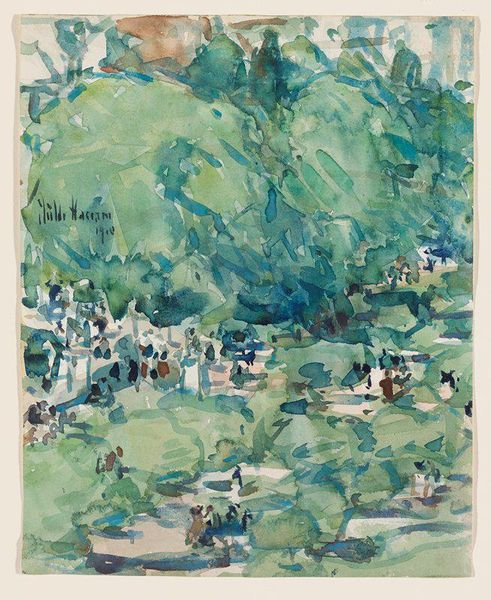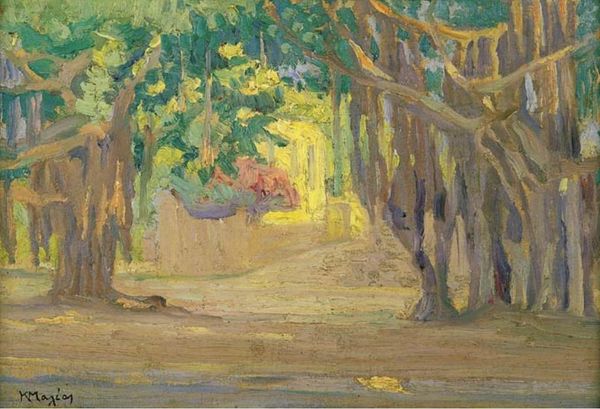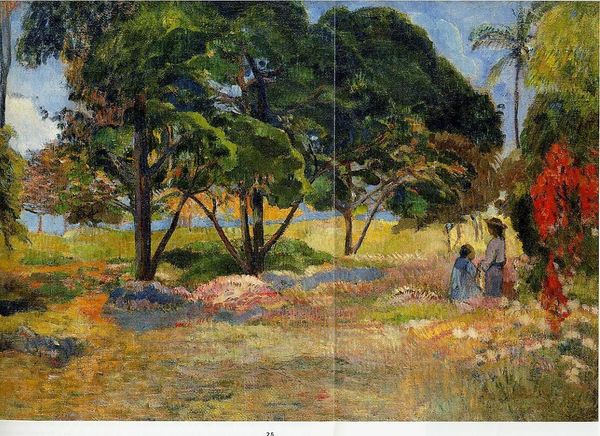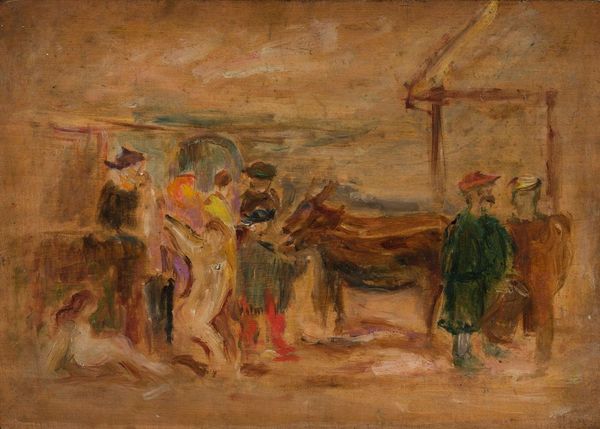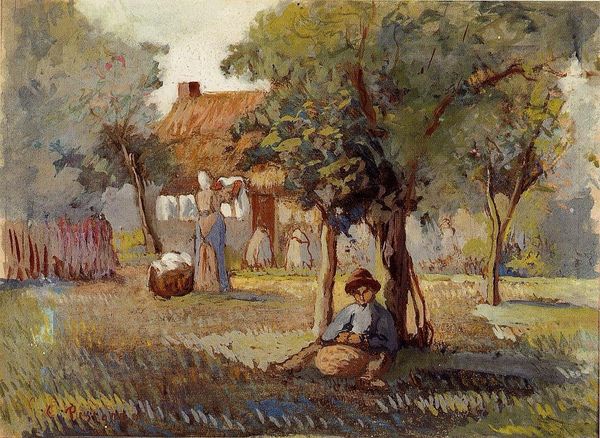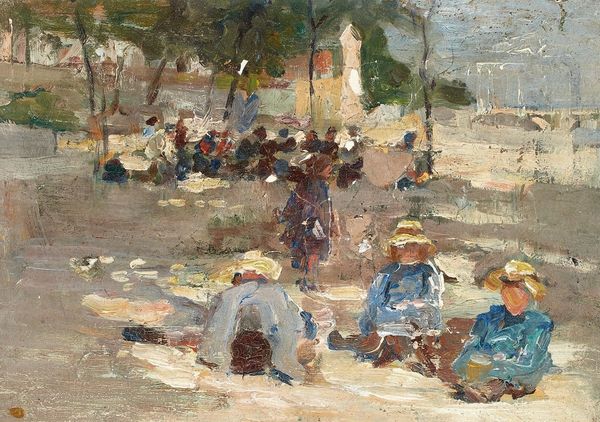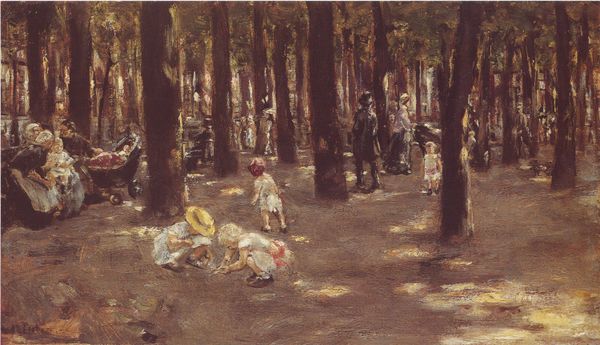
Dimensions: 28.5 x 21.5 cm
Copyright: Public domain
Curator: So evocative, isn’t it? What are your first impressions of this park scene? Editor: A kind of breezy calm, I'd say. There's a blurred quality, figures just suggested—it’s like a memory half-forgotten. Are those people reading, chatting? You almost can't tell, and maybe it doesn't matter. Curator: Exactly! And what we’re looking at here is George Luks’ “Prospect Park,” painted in 1906. It currently resides at the Brooklyn Museum, a wonderful place to view it in person. Luks was, of course, part of the Ashcan School. This oil painting captures the urban experience with an impressionistic touch, en plein air—painted outdoors to capture the immediate impression of the scene. Editor: The brushstrokes are so loose, the colors a little muted. Very different from, say, a hyper-realistic city rendering. You know, I get the sense that he wasn’t really trying to document exactly what he saw. More about capturing the feeling of being in the park. The light filtering through the trees. That bustling-but-relaxed energy you find when people are just enjoying downtime. Curator: Yes! Notice how the park is populated with figures that aren’t particularly idealized—ordinary people engaging in ordinary activities. Reading, strolling, simply existing. Luks’ symbol choices, therefore, indicate an immersion in an everyday Eden where work stops and leisure starts. The tree, the park... these carry the emotional weight of peace and the good life. Editor: An Eden for everyone, perhaps? And with his broad strokes, and the dappled light effect, there’s something so universally inviting about it. I feel like anyone can see themselves in this scene. The light and dark shades almost act like a form of memory, as you had alluded to earlier. It really captures that sense of community and human interaction, wouldn't you agree? Curator: Indeed. In many ways, paintings like “Prospect Park” allow us to reconnect to these places across time, to understand how these communal experiences have been culturally vital through multiple generations of city dwellers. It allows us to trace the lines of memory and belonging. Editor: Absolutely, a perfect window into the past—filtered with a whole lot of painterly charm, that is! Thanks for revealing all the cultural undertones to it all. Curator: My pleasure, hopefully, listeners were transported to an urban Arcadia with this insightful look into Luks' famous oil painting.
Comments
No comments
Be the first to comment and join the conversation on the ultimate creative platform.
